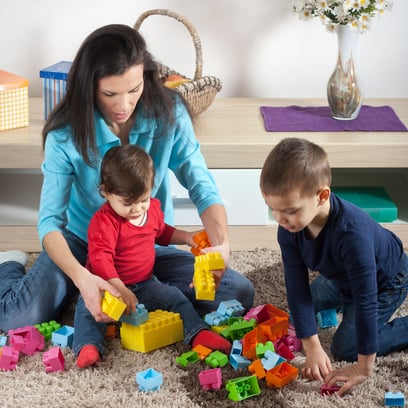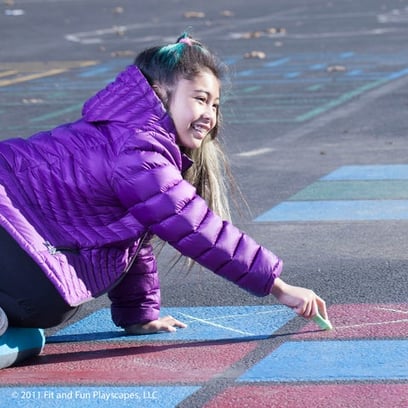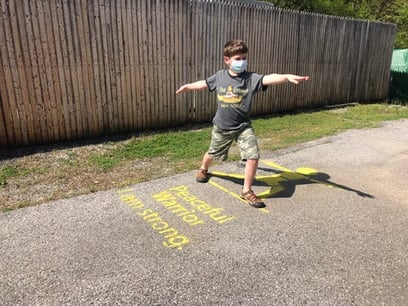Sensory Essentials: Vestibular/Tactile/Proprioceptive Senses
We have eight senses - yes, eight - that help us in every aspect of our daily lives.

However, for the purpose of this article, it is important to recognize that there are three senses that are absolutely essential to helping children self-regulate – they are Tactile, Vestibular, and Proprioception.
As newborns to seniors, these three senses guide and shape our development over time. They are essential to moving, playing, and learning and impact the many developmental changes that occur across the lifespan. Stimulating these senses on a daily basis by providing sensory pathways, movement breaks and daily physical activity lead to a healthy lifestyle and self-regulation.
What is the Vestibular Sense?
The vestibular system includes the parts of the inner ear and brain that help control balance, eye movement, and spatial orientation. The vestibular sense helps us stay in a stable and upright position and allows us to spin, bend, twist, stretch, etc., without fear of falling.
Children with vestibular issues may be very fearful of leaning backward, walking on uneven surfaces, playing on playground equipment, or going on a swing. A weak vestibular system disrupts balance and can make a child feel as if they are out of control of their body.
Embedding sensory pathway opportunities throughout the child’s day, such as playing follow the leader, swinging, standing on a balance board, or playing hopscotch can improve the vestibular system. More importantly, creating opportunities for midline crossing while actively engaged in a vestibular activity can improve a child’s balance while promoting motor planning.

What is the Tactile Sense?
The tactile sense is how we receive information from the receptors on our skin. When we touch an object or feel something on our skin, receptors on the skin send signals to the nervous system. The nervous system relays this information to the brain where it is interpreted. The tactile system helps us understand and differentiate pressure, texture, temperature, and other tactile qualities of the object or sensation we are feeling.
The tactile system also helps us understand and feel pain. Some children have a very high tolerance for pressure and often don’t show that they are in pain. For example, some children can fall to their knees repeatedly or walk on rocks without showing pain. Others cry excessively when a finger is pinched in a book or if they bump or fall down.
The tactile system is connected to the emotional center of the brain. How the brain interprets the various tactile sensations we encounter can often determine if we remember something as pleasurable or painful. These sensations can impact the willingness of a child to participate in activities if they perceive that they may experience painful or pleasurable sensations.
What is the Proprioception Sense?
Proprioception refers to sensory input we receive from our muscles and joints that tells us about our body position and where we are in relationship to other objects.
Proprioception receptors are located in the muscles, joints, ligaments, and other connective tissue throughout our body. Without this important system, we would not know where different parts of our body were when not looking at each part.
For example, if you ask a child to raise their hands above their heads, most do not need to look in a mirror to know that their hands are above their heads. But for children who struggle with delays in proprioception, they may think their arms are over their head but in reality, they are straight out to the side. This is often why you might observe children walking down the hallway in a school with one hand on the wall. They are often seeking input as to where their body is to other objects, such as the wall.
Close your eyes and put one hand on your ear and the other on your knee. You were able to do this without seeing where your ear or knee are because of proprioceptive input. The relation of where your ear and knee are to the placement and movement of your hand through space is an example of how essential proprioception is to self-regulatory behavior. If the child wasn’t able to know this information, they can become fearful of new situations and avoid motor activities.
Providing practice through sensory pathways can help a child feel more in control of their body and less anxious.
ABOUT THE AUTHOR

Timothy D. Davis, Ph.D. CAPE teaches undergraduate and graduate courses at the State University of New York (SUNY) Cortland. Some of his courses include Adapted Physical Activity and Sport, Motor Development, Instructional Strategies in APE, Inclusive Outdoor Education and Positive Behavior Management and Discipline. He has been teaching for over 20 years and holds bachelor's and master's degrees in Physical Education and Adapted Physical Education from California State University at Chico. He holds a Ph.D. in Adapted Physical Education from the University of Virginia.
At SUNY Cortland, Dr. Davis serves as director of the SUNY Cortland CHAMP/I Can Do It Afterschool Peer Mentorship Program and the Sensory Integration/Motor Integration (SIMS) program. He is the creator of Project DREAM, a learning program that helps kids and students with disabilities, and Project LEAPE, a leadership course dedicated to helping kids and adults with disabilities.
Have further questions? Dr. Tim can be reached by visiting this page.





Leave a comment